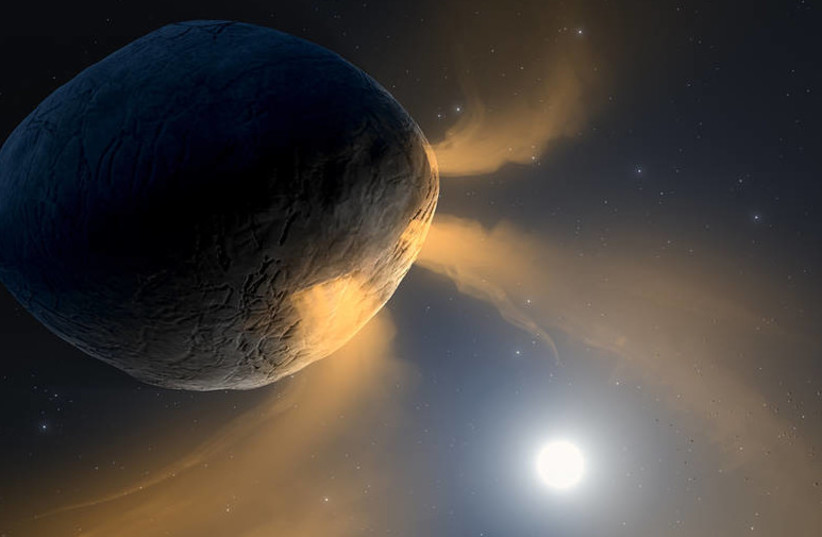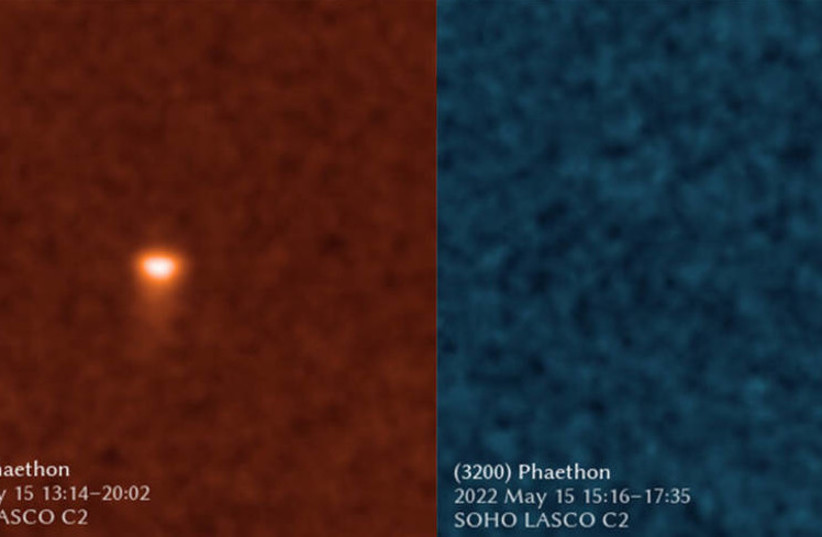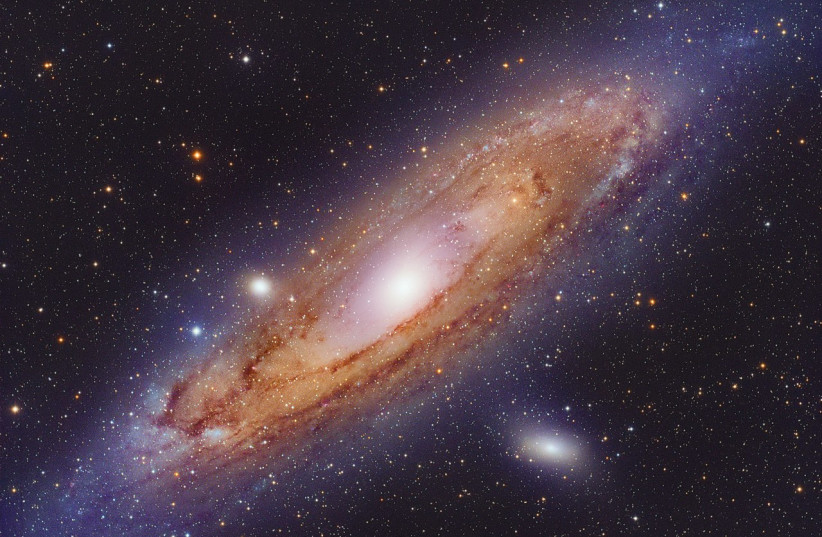The Fluidic Telescope (FLUTE) project team, jointly led by NASA and Technion–Israel Institute of Technology, envisions a way to make huge circular self-healing mirrors in-orbit to further the field of astronomy. Larger telescopes collect more light, and they allow astronomers to peer farther into space and see distant objects in greater detail.
These next-generation large space observatories would study the highest priority astrophysics targets, including first generation stars—the first to shine and flame out after the Big Bang—early galaxies, and Earth-like exoplanets. These observatories could help address one of humanity's most important science questions: "Are we alone in the universe?"
Like a carry-on suitcase, payloads launching to space need to stay within allowable size and weight limits to fly. Already pushing size limits, the state-of-the-art 21 foot (6.5 meter) aperture James Webb Space Telescope needed to be folded up origami-style—including the mirror itself—to fit inside the rocket for its ride to space. The aperture of an optical space observatory refers to the size of the telescope's primary mirror, the surface that collects and focuses incoming light.
The aperture for the space observatory envisioned by FLUTE researchers under the current concept would be approximately 164 feet (50 meters) in diameter—half as long as a football field.
Conventional technology for making optical components for telescopes is literally a grind. It involves an iterative process of sanding and polishing solid materials, such as glass or metal, to shape the precise curved surfaces of lenses and mirrors needed. Using current technologies, scaling up space telescopes to apertures larger than approximately 33 feet (10 meters) in diameter does not appear economically viable.
FLUTE's novel cost-effective technology approach, in contrast, takes advantage of the way fluids naturally behave in microgravity.
All liquids have an elastic-like force that holds them together at their surface. This force is called surface tension. It's what allows some insects to glide across water without sinking and gives water droplets their shape.
Eytan Stibbe aboard the International Space Station during the Axiom-1 (AX-1) mission in April 2022, shown here with his hands in the life sciences glovebox, or LSG, performing the Fluidic Space Optics experiment of Technion and NASA. During the experiment, Stibbe injected liquid polymers into circular frames to form lenses. He subsequently processed the lenses to harden them for later study on Earth.
On Earth, when droplets of water are small enough—0.08 inches (2 millimeters) or smaller—surface tension overcomes gravity, and they remain perfectly spherical, much like droplets of morning dew beading into tiny spheres on plant leaves. If a droplet grows much larger, it gets squished under its own weight. But in space, where fluids are free-floating, unhindered by gravity, even large amounts of liquids assume the most energy efficient shape possible, a perfect sphere.
Liquids can cling to surfaces due to a physical property called adhesion. In microgravity, if a sufficient amount of liquid is made to adhere to the interior surface of a circular, ring-like frame, the liquid will stretch across the inside of the frame and naturally form a curved shape—called a spherical section—thanks to surface tension.
By using the right volume of liquid, it is possible to make the surface of the liquid curve inward instead of bulging outward. If the liquid is reflective, that inwardly curved surface can serve as a telescope mirror.
FLUTE would launch liquids to space as the raw material to make optical components in orbit. The primary mirror would form within a huge circular frame and remain in liquid state with an extremely smooth surface for collecting light. FLUTE's technology approach is theoretically able to scale up to very large sizes. The technology could potentially enable telescopes with apertures measuring 10 times—or even 100 times—larger than telescopes to-date.
A unique feature of the liquid mirror would be its ability to self-repair if damaged in space. For instance, if a micrometeorite impacts the mirror's surface, it would naturally heal itself within a short period of time.
The FLUTE team has conducted small-scale experiments in shaping lenses from liquids in different environments: First using neutral buoyancy space analog conditions in a ground laboratory and then in a series of parabolic microgravity flights and aboard the International Space Station.
With the support of a NASA Innovative Advanced Concepts (NIAC) Phase I award, the team is working to analyze options for the key components of a fluid telescope observatory, further develop the mission concept, and create an initial plan for a subscale small spacecraft demonstration in low-Earth orbit.
Milestones:December 2021:
November 2022: The FLUTE team conducted parabolic flight tests aboard Zero Gravity Corporation's G-FORCE ONE. This set of experiments focused on creating liquid mirrors rather than lenses, which was done using ionic liquids and an alloy of gallium. Gallium is a non-toxic, highly reflective metal that has a very low melting temperature. Pure gallium melts at approximately 85 degrees Fahrenheit, meaning you can melt a piece of gallium by just holding it in your hand.
January 2023: FLUTE was selected by NASA Innovative Advanced Concepts (NIAC) program for a Phase I study.






















:quality(70)/cloudfront-us-east-1.images.arcpublishing.com/archetype/M4NO5RBARBDWTBQBHT5E7UFFBY.jpg)
:quality(70)/cloudfront-us-east-1.images.arcpublishing.com/archetype/SJTKMTZJRZATTLA4OMAWJFV5OE.png)
